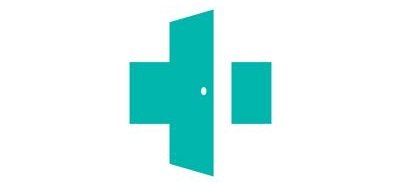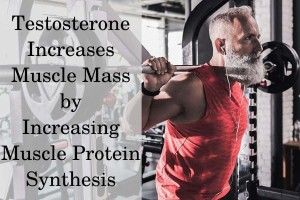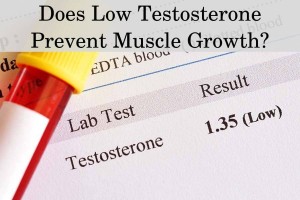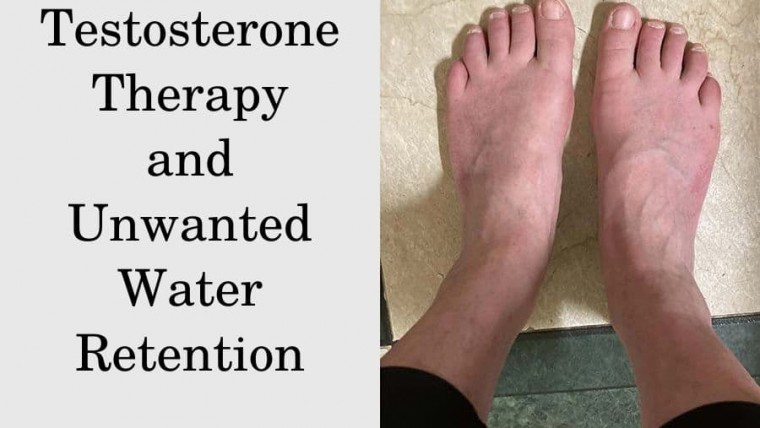In this article
The male sex hormone testosterone (T) is well-known for its key role in the growth and maintenance of muscle mass and strength.
In fact, all male sex hormones are regulators of the process thanks to their affinity to the androgen receptors in the nuclei of muscle cells. By activating these receptors, T and other androgens work on a cellular level to stimulate muscle protein synthesis.
But as you age, your testosterone levels tend to decline, which can lead to a loss of muscle mass and strength. The decline in T levels often coincides with an age-related decrease in physical activity levels, which can further exacerbate muscle loss.
On the other hand, taking exogenous testosterone such as during testosterone replacement therapy (TRT) can revert the process and significantly increase muscle protein synthesis. The muscle-building effect varies from one man to another, as it depends on dosage, genetics, individual sensitivity, diet, physical activity, etc.
However, it is important to note that while TRT may increase muscle growth in every man, it is not a medication for building muscle. The effects of TRT are safe only in individuals with medical indications such as hypogonadism who need the therapy to achieve normal serum T levels and manage their symptoms.
Why do you need testosterone to build muscle?
Testosterone acts on your muscles via the so-called androgen receptors, which are proteins found within your muscle cells’ nuclei. When Т binds to the androgen receptors in the muscle cell nucleus, it initiates a cascade of molecular events that result in the activation of genes responsible for muscle growth and repair.
This activation leads to an increase in muscle protein synthesis (MPS) and a decrease in muscle protein breakdown, resulting in a net increase in muscle mass and strength.
In addition to its effects on MPS, research has shown that testosterone increases the number of muscle cell nuclei in muscle fibers, resulting in a greater capacity for muscle growth and repair.
Moreover, studies show that T increases the number of androgen receptors in muscle cells, which amplifies its anabolic effects. The increased receptor density allows muscle cells to respond more effectively to the testosterone present in the bloodstream, leading to more significant gains in muscle mass and strength.
Having high testosterone levels can make you gain muscle, even if you are not training. For example, in adolescents, increases in testosterone levels during late puberty, and more specifically free T>12 ng/dl, are associated with significantly greater muscle mass.
With that being said, testosterone is not fundamentally necessary for muscle growth. In fact, muscle growth is possible even with very low testosterone levels as long as there is a significant stimulus, such as resistance training.
For example, men and women have similar potential for muscle growth even though females have 15 times lower T levels. Furthermore, younger men also had a similar potential for growth as older individuals.
That is despite the fact that as men age, testosterone levels tend to progressively decline with an average rate of 1.6% per year. Research also reveals that muscle mass declines with age by as much as 3-8% per year.
While the decline is undoubtedly related to the drop in T levels, the researchers also outline that the decrease is heavily influenced by the age-related reduction in physical activity which is extremely common amongst aging adults.
Thus, despite the decline, healthy men with T levels within the references who remain active as they age will likely maintain most of their muscle size and strength.
How can low T affect muscle growth?
Low testosterone can make muscle growth considerably harder and even cause muscle loss in sedentary individuals.
Studies in healthy men who had their T levels suppressed to hypogonadal levels report that low testosterone significantly attenuated the response to 6 weeks of resistance training.
The researchers report that low T suppressed the molecular transducers of muscle growth, and as a result, both muscle protein synthesis and breakdown were reduced.
Nevertheless, low testosterone does not completely prevent muscle growth. The results suggest that you may still be able to build some muscle or at least retain your gains with low testosterone. The T-suppressed group gained 0.4 kg of muscle mass compared to 1.5 kg in the group with normal testosterone.
Apart from the direct effects of T on muscle protein synthesis, male hypogonadism can also lead to several symptoms that can make men less active, such as fatigue, decreased energy, and depression.
These symptoms can affect motivation and make it challenging to maintain a regular exercise routine or follow a healthy diet, leading to muscle loss.
Scientists have also reported that there are cases of muscle pain and increased rates of injuries amongst physically active people with low T.
One such case study reports an athlete with a high rate of injuries and hypogonadism. TRT led to a significant decrease in the muscle injury rate and a reduction of other symptoms due to low T.
Will testosterone injections help you build muscle?
Testosterone therapy is so effective at stimulating muscle building that supraphysiological doses can lead to gaining significant amounts of muscle mass even without exercise.
In fact, research in adults reports that men who are given supraphysiological doses of TRT for 10 weeks without any physical training end up gaining more muscle mass than men who are resistance training but take a placebo. The participants in the TRT group had serum T levels that were 200% above the physiological limit on average.
However, TRT is not a medication for muscle growth or strength gain. Using supraphysiological doses of TRT for muscle building is effective but also associated with significant risks.
On the other hand, patients with hypogonadism who take TRT to achieve physiological serum T levels will also experience significant improvement in muscle mass and strength with minimal side effects
If you have low T, TRT will also alleviate your symptoms and improve your quality of life. TRT will help increase muscle mass in these patients primarily by increasing levels of free testosterone, which can freely interact with the androgen receptors in muscle cells.
The best testosterone levels for muscle growth are those that involve free T levels of at least 12 ng/dl. Such levels are close to the physiological limit of 16 ng/dl.
Furthermore, total T levels should also be within the physiological limit of 1000 ng/dl in order to minimize the risk of side effects.
According to a meta-analysis of 11 studies, physiological doses of TRT with a duration of at least 3 months can lead to an increase of lean body mass by 1.5-6 kg.
Some muscles tend to be more sensitive to androgenic stimuli than others. For example, the trapezius muscle has more androgen receptors and responds with more muscle growth than leg muscles.
TRT will also increase muscle retention in periods of reduced energy or protein intake. One trial in active young adults who were put on a significantly restrictive diet reports that testosterone minimized protein breakdown. In fact, the participants gained over 2 kg of lean muscle in just 28 days despite the energy deficit.
Apart from increasing muscle mass and muscle strength, TRT can also help increase muscle endurance and speed up fat loss. Testosterone enanthate significantly improves aerobic fitness (aka endurance) in older individuals.
Furthermore, TRT can lead to significant fat loss, which in combination with the muscle-building properties of the medication and an appropriate exercise regime, can give you a more muscular and ripped appearance.
What is the best testosterone for muscles?
Different testosterone formulations may vary regarding their effectiveness in increasing muscle mass. Currently, TRT is approved in the form of injections, gels, pellets, pills, and patches.
One meta-analysis of several trials reports that injectable TRT is much more effective than transdermal formulations such as patches and gels at increasing muscle strength and muscle mass in middle-aged and older men.
This may be due to the fact that testosterone injections lead to a much faster increase in serum T levels and speed up the results of the therapy.
Furthermore, the researchers reveal that there was not any significant difference between the muscle-building effects of different types of injectable testosterone, such as testosterone undecanoate and enanthate. That is despite the different half-life and dosing regimes of each testosterone ester.
Another study, which was conducted in trans men, also reports that both slow-acting and fast-acting injectable TRT are equally effective and can increase muscle mass by 5 kg within a year.
In contrast, dietary supplements or emerging treatments like red light therapy which are labeled as testosterone boosters should not be mistaken as effective alternatives to TRT. In fact, there is no evidence that testosterone boosters can cause a significant increase in testosterone levels in either healthy or hypogonadal men.
Research on T-booster supplements shows that less than 25% of the most common ingredients in these products have any evidence to suggest a positive effect in healthy men. Moreover, about 10% of the testosterone boosters contained components with potentially negative effects on T.
How much testosterone to inject to build muscle
The most appropriate dosage of TRT for you must be determined by a medical doctor with experience in hormone replacement therapies.
Important to remember that there is no specific TRT dosage for muscle growth since the main aim of the therapy is to relieve all symptoms of low T.
Furthermore, dosing depends on your pre-treatment T levels, symptom severity as well as the specific type of T injections.
In general, testosterone injections should be taken once a week or once every few weeks, depending on the formulation. The main FDA-approved types of injectable testosterone are enanthate, cypionate, and undecanoate.
In order to build muscle and manage your symptoms, testosterone enanthate can be applied intramuscularly every 1-4 weeks in doses ranging from 50 to 400 mg.
Testosterone cypionate has a longer half-life which is why it is usually taken in doses of 50 to 400 mg every 2-4 weeks. Testosterone undecanoate has the longest half-life. It should be applied every 10-12 weeks in doses of 750-1000 mg.
How fast does testosterone build muscle?
The speed at which you will experience the muscle-building effects of TRT depends on your specific dosage.
In general, studies report that increases in muscle mass and strength usually occur within the first 3 months of therapy and progressively improve for 6-12 months.
The amount of muscle you may gain monthly also depends on your diet and physical activity levels. For example, healthy men who were taking 200 mg/week of testosterone enanthate and participated in strenuous exercise reported that they gained an average of 2.5 kg of muscle mass in a month.
The participants were engaged in resistance training, as this type of exercise has much higher effectiveness for building muscle compared to aerobic activities.
It’s important to note that the men were in a caloric deficit. The combination of exercising and TRT at these doses could lead to an even higher muscle mass increase if it’s coupled with a positive energy balance and sufficient protein intake.
In fact, ensuring a sufficient protein and energy intake is essential for maximizing the muscle-building effects of TRT
Physically active individuals who aim at building more muscle should consume at least 1.2 grams of protein per kilogram of body weight. Furthermore, the optimal amount is likely in the range of 1.6 – 1.8 grams of protein per kilogram of body weight.
If you also have other medical conditions, such as growth hormone deficiency, then combining TRT with HGH therapy can provide additional benefits for muscle building.
Research in elderly people reports that the combination of TRT and HGH leads to a significantly higher increase in muscle mass and strength compared to either of the treatments alone (coupled with a placebo).







